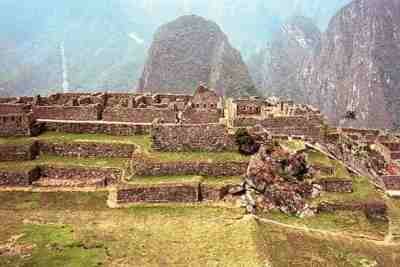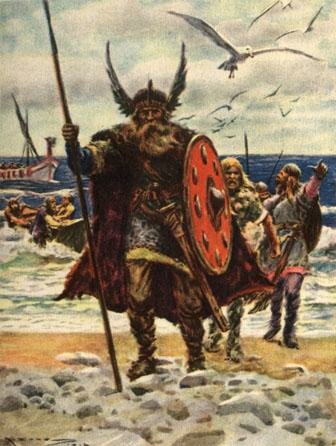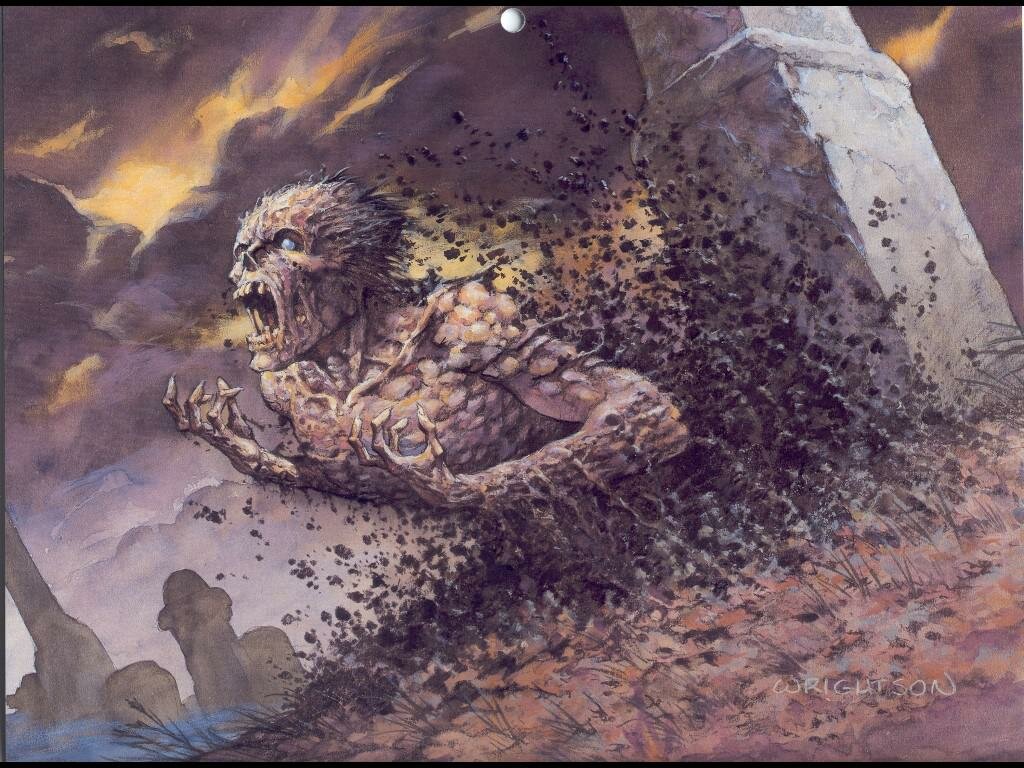Top 10 Lost Civilizations
Suggested by SMSThere’s something fantastically romantic about the idea of a lost civilization. Perhaps it’s the mystery that surrounds these historical treasures. Personally, I’m always excited by the idea that the world might be a very different place had they survived to influence us today.
10. The Minoans

The Minoan civilization is widely regarded to have been the first true civilization in Europe. It centred on the now Greek island of Crete. From there the Minoans operated a wide trade empire, creating colonies on mainland Greece and trade outposts on other Mediterranean islands. The Minoan civilization was destroyed when a volcano in the centre of a nearby island underwent a massive eruption.
The Minoans are accredited with the creation of the myth of the Minotaur and the invention of the flushing toilet. The queen’s toilet in the palace of Knossos used the diverted waters of the nearby river to ‘flush’ her ‘nasties’ away. The civilization greatly influenced the later civilizations of ancient Greece, who’s first written language (linear B) was a derivation of the Minoan script (Linear A).
9. The Aztec

The first interesting thing to note about the Aztec people is that they were not called the Aztec. As a matter of fact it was forbidden for these people to use that name. Only the neighbouring tribes called them Aztec, probably because they knew it would really annoy them. Nor were they one people. They were instead an alliance of three tribes that had once served as slaves to an older civilization they called the Aztec. After staging a small revolution the allied slave tribes headed off in search of a land to call their own. Eventually they found their promised land when an eagle, carrying a snake, landed on a cactus as prophesised. The fact that this promised land was an island in the centre of lake Texaco didn’t dissuade them, they built their great city, pyramids and all, right on top of the lake. The city of Tenochtitlan remained a centre of worship, culture and trade for centuries until the Spanish, under Cortez, tore it apart in the hunt for legendary gold. Little of the great city remains. The modern day capital, Mexico City, was built right on top.
8. The Olmec

The Olmec were the oldest of the great Mesoamerican civilizations. Although comparatively little is known about them today, they are widely believed to have been the mother civilization of the Aztec, the Toltec and other Central American cultures. Evidence suggests that many of their rituals inspired these later civilizations. One such ritual is the ancient ball game (an early form of basketball), which was played by many cultures afterwards. Whether or not the Olmec carried out ritual sacrifice or religious blood-letting like other Mesoamerican cultures, however, is a matter of academic debate. Iconic Olmec artefacts include their giant stone-carved heads, some of which are over three meters tall, although a host of other, smaller artefacts suggest a highly developed culture. This is coupled by their development of a written language, the first in Pre-Columbian America. The Olmecs also developed the concept of ‘zero’ in their mathematics, something which the Romans failed to achieve.
The Olmec civilization lasted from roughly 1400 BC to 400 BC. It is commonly believed that environmental changes were the cause of its downfall, although the rise of the neighbouring Mayan civilization may have also been a contributing factor. Others suggest that the Olmec themselves may have been of Mayan ancestry. The two civilizations clearly influenced one another, but it is not known which was truly the more advanced.
7. Babylon

Babylon was an ancient city state in ancient Mesopotamia (present day Iraq). By the fifth century BC it had grown into an empire, governing most of present day Iraq. The city was a centre of art, diplomacy, science and religion. It was briefly conquered by the Assyrian Empire but threw off its captors and re-established its empire under the great king Nebuchandnezzer.
Babylon was later captured by the Persians and later the Macedonians, under Alexander the Great. Babylon once again flourished under Alexander but after his death, in 323 BC, the kingdom was divided up. The city of Babylon subsequently fell into turmoil and obscurity and was subsequently abandoned. All that remained of Babylon in the modern era was a mount of ruins, that is until Saddam Hussein re-built the city as a symbol of his own vast ego. During their invasion of Iraq, the U.S military chose to build their ‘camp alpha’ on the site of the reconstructed Babylon. This was surely designed to act as a symbol of their own power in the region.
Babylon was famed for it’s hanging gardens, one of the wonders of the ancient world, although archaeologists still debate whether or not these actually existed. Mesopotamia on the whole, however, was a hotbed of culture and civilization. The area gave birth to many ancient languages and some of the most advanced early civilizations.
6. The Phoenicians

The Phoenicians ruled an impressive trade empire across the Mediterranean and exerted a cultural influence from the Near East to Southern Spain. Their home was in Caanan and consisted of a series of city states stretching along the coast of present day Syria, Lebanon and Israel. The centre of their civilization being in Lebanon. Their trade empire, however, stretched much further and established trade routes went as far as Morroco and Southern England. Along the way, the Phoenicians established outposts and colonies, particularly in North Africa where they founded the great city of Carthage, which later became Rome’s greatest adversary.
The Phoenecians were more than simple traders and were armed with more than purses of gold and holds filled with Roman and Egyptian goods. They were also great mariners. They explored the East coast of Africa, at least as far as Liberia, and legend tells that they may have in fact circumnavigated the African continent at least once. This was not achieved again until the middle ages when the Portuguese sought a passage to the orient. During the Punic wars, the Phonecian colony of Carthage (present day Tunisia) was seen as the greatest enemy that Rome had ever faced and had the great empire on its knees.
5. The Maya

The Maya civilization was undoubtedly the greatest in Pre-Columbian Central America. This was the most advanced and longer lasting civilization of the area, dominating the Yucatan Peninsula from 2000 BC to 900 AD. During this time the Maya built great cities, complete with awe inspiring pyramids and temples, and developed an advanced writing system (the only writing system in Central America to represent a spoken language). The Mayan influence extended far beyond the Yucatan, however. Their sphere of influence once extended as far as the Gulf of California to the north and Costa Rica to the south. At their height the Mayan peoples dominated Southern Mexico, Belize and Guatemala, however the great empire went into decline during the eighth and ninth centuries as a result of overpopulation and drought. By the time the Spanish came to seek out the fabled cities of gold, the Mayan civilization had disintegrated into a collection of city states in the Yucatan, largely replaced by the newly powerful Toltecs. The centre of trade in the region was now the Aztec capital, Tenochtitlan. The Maya endured, however, and took the invading conquistadors a century to fully subdue. Even now, their culture and language live on as one of Mexico’s larger ethnic groups.
The great Mayan civilization left behind a wealth of fantastic ruins from their many, highly developed cities, including temples, palaces, ball courts and even observatories. The Maya were keen astrologers and believed that the movement of the heavens had a direct impact on the world they inhabited. These movements were carefully calculated and recorded.
4. The Toltec

The Toltec as much of a myth as they are a truly ‘lost civilization’. Whilst the accounts of many Mesoamerican cultures refer to a civilization known as the Toltec, academic debate rages over whether or not there ever was a Toltec empire. It was first believed that the Toltec civilization developed during the decline of the Mayan empire and faded away before the birth of the Aztec, occupying an overlapping area between them. However, it is now believed the term Toltec may refer to several different civilizations or even a cultural change in Mesoamerican society.
The word Toltec is roughly translated to mean an urban people, or a high concentration of people, and is synonymous with art and high culture. Their mythical capital was named Tollan, meaning ‘city where the people are as thick as reeds’.
The Toltec are a possible culprit for the downfall of the Mayan civilization. Several Mayan centres of power were said to have been taken by the Toltec, but this might represent the separation of the empire into city states, a cultural movement of ‘urbanism’ and revolt. This might also be evidence to support the theory that it was overpopulation that was the empire’s downfall. Evidence of the ‘Toltecization’ or ‘mexicanization’ of the Yucatan would suggest a cultural influence from central Mexico, although ideas of a Toltec civilization may stem from references to this cultural change its self, rather than the spread of any unified power.
To the Aztec, however, the Toltec seem to have been a real people. These people allegedly lived in the city of Tollan and were the ancestors of the Aztec. They were supposedly led by the god Quetzalcoatal but left their city to find a new home. The Aztec claimed that they were this second Toltec civilization, although others have made the same claim.
Was there really a great Toltec civilization? A great urban civilization of artisans and wise men, as the translation suggests? Or is this pure Mesoamerican myth? The possibility remains that the legend of the Toltecs may be a historical account of the Olmec civilization, from which many Mexican cultures evolved.
3. Maurya Empire

The Mauryan Empire began as one of the sixteen kingdoms of ancient India. It spread to control present day Bengal and later the entire of Northern India and beyond. As the Greek/Macedonian empire spread through Asia, the Maurya took advantage of the power vacuum created and invaded parts of Pakistan. This would see them drawing battle lines with the invading Europeans and entering into a very volatile relationship. Ashoka the Great vs Alexander the Great. East meets West – the greatest standoff in history.
The Mauryan Empire operated a strict financial regime, much like the Moguls after them. But they weren’t all bad. In fact the Maurya embraced Buddhism and used their far stretching influence to spread the message of the Dharma far and wide, along trade routes and even into Europe. As the alliance with Greece grew, the Maurya leaders encouraged the Greek kings to take up Buddhism and embrace Indian medicines and ideas. Greek peoples living in India were treat well and even converted to Buddhism.
Later, as the Mauryan Empire went indo decline, Western powers were able to invade India, creating the Greco-Indian kingdom. Little remains of the Mauryan Empire today.
2. The Inca

The Inca began as a small tribe in the Cuzco region of Peru. The Gods instructed them to build a temple there to the sun. This temple site soon became a city state and the city state grew into an empire. The Inca subjugated several other tribes in the vicinity and, before too long, controlled the largest empire in America.
The Inca empire functioned as a federal system. The conquered regions retained a degree of power and autonomy, becoming part of the central government in Cuzco, which became a great city. The Inca ruler preferred to send peace envoys, rather than armies, to neighbouring kingdoms. These envoys would explain the benefits of joining with the Inca and bribe them with lavish gifts. Those that agreed were accepted into the empire and enjoyed economic prosperity as a result. The children of the allied leaders would be taken to Cuzco to be educated in Inca religion and politics. The Inca royal family (who surname just so happened to be Inca) would then marry their daughters into the newly appropriated aristocracy. Tupac Inca expanded the empire further by conquering present day Equador and Peru. His son, Huayna Capac then conquered parts of Chile, Bolivia and Argentina. This region was not entirely loyal to the Inca, however, and became hostile to them once the Spanish arrived and tipped the balance of power.
The Inca operated a successful and relatively benevolent trade empire. It is said that the tax collectors would take flees from the poor as a symbolic gesture. The Inca ruler was worshiped as the descendent of the sun god, but the religions of vassal cultures were incorporated alongside the state religion.
The Inca’s wealth was their eventual downfall. When the Spanish arrived they were on the hunt for treasure and found the Inca in control of all the regions wealth. The Spanish returned in 1539 and began a campaign of conquest. By then the Inca’s long reaching trade routes had brought smallpox from Spanish territories in Mexico, and so they were severely weakened. The Incas offered a tribute to the Spanish but offended them by refusing to convert to Christianity. As a result, the Inca Empire was conquered. However the Inca retreated to the mountains and ruled over a reduced kingdom for a further three decades.
The most famous Inca ruin is the mountain retreat of Machu Picchu, believed to have been the Inca equivalent of a high class vacation complex.
1. Ancient Egypt

Ancient Egypt – the land of the Pharaohs. Surely the most inspiring of all the ancient and lost civilizations.
The ancient Egyptians were culture obsessed with death and spent their entire lives preparing for the cross over to the other side. They say that you can’t take your money with you when you go, but try telling the ancient Egyptians that. Wealthy Egyptians created burial vaults for themselves, in which their mummified bodies could be surrounded by everything they would need when they reached the afterlife, including their internal organs which were placed into jars for safe keeping. The greatest of these tombs were the pyramids. The pyramids doubled as monuments to the greatness of the pharaohs that built them and even featured temples where the pharaoh could continue to be worshiped as a god long after his demise. Less powerful families opted for small crypts under or near their homes where family members could visit and pray over the deceased. If you were really rich you might have been able to afford a tomb in the luxury ‘valley of the kings’ estate. The valley had it’s own security force, paid to keep grave robbers from stealing you positions whilst you ‘slept’. These security guards were often corrupt though, and much of the Pharaohs’ wealth was plundered.
Just how did the Egyptians build the pyramids? The answer is with whips – massive whips and countless slaves. The fact that the Egyptians were masters of mathematics and science probably helped too. The Egyptians were a highly organized society. Slaves and workers were overseen by a ruling class of architects, intellectuals and scribes. The highest order were the priests and scribes (writers). All members of the society, from farmers to scribes, were seen as having equal rights, but the slaves would likely have been brought in from all corners of the empire to construct the great pyramids.
The Egyptian civilization began around 3150 BC and enjoyed long periods of prosperity interspersed with short periods of instability for nearly three thousand years. The empire went into decline as it faced invasion from several foreign powers including the Romans and Macedonians. In 31 BC, Egypt was annexed into the Roman Empire and became a vassal state. After this the ancient society of Egypt was altered and ‘Romanized’ to its end. The gods of old were merged with Roman and Greek gods over time, and eventually were swept away altogether when the Roman Empire converted to Christianity. Egypts days as a great and powerful civilization were over. Christianity made way for Islam as the country became part of the Islamic Empire and the great temples became little more than sun-baked tourist traps.
Civilizations Not On The List
You may notice that two very important ancient civilizations have not been included on this list. The great civilizations of Rome and Greece are perhaps the greatest of all ancient civilizations and still exert an influence upon us. Whilst ancient Greece can be seen as more of a continuation of several great empires and civilizations, Rome has been one long line of continuing civilization. Neither of these civilizations can truly be considered to have been ‘lost’ in the way that others on this list have. Although the military empire of Rome fell to a multitude of internal forces, it’s culture and civilization continued for centuries, exerting such massive influence that it can be seen as the bedrock of all western society. In fact, despite the absence of it’s legions, Rome continued to use its political power (through the papacy) to influence it’s former empire and beyond for centuries afterwards. Rome gave us organised Christianity, technology and infrastructure, and much of the civilization we enjoy today. Most European languages still use the Greek and Latin alphabets today, and Latin continued to be the major language of scholars throughout the middle ages. These great civilizations were not included in the list because they were never entirely ‘lost’ to the annals of time. They merely changed, adapted and grew into the great amalgamated western society of today.










Interesting list. However, the theory that the Minoan society was destroyed by a volcano is just pop hokum. The ash from the Santorini eruption was blown east, not south, and the Minoans were thriving on Crete for at least 80 years after the eruption. The Minoans were simply brought down by the invasion of the warlike Achaean Greeks ca. 1450 BC (See Roots of Catclysm:Geoopulsation and the Atlantis supervolcano).
good opservation
Hey, how about the chinese?
they were very advanced in military!
dont do the chinese keep doing anctint civlilizations if it help you can try looking at the history book called " History a Voyage Though Time" and if you do start with chapter five, and go the the rate that the teacher you teach in six grad not specilal ed
p.s.
sorry about the speeling i am sick.
tell me more i need help in class
sorry i forgot to say that if u could tell me more about the MINOANS.
interesting, thanks this helped us alot in our presentation.
arabs also had interesting civilizations look into it.
why the INDUS VALLEY civilization is not in the list?
Delsey Luggage Reviews
Top 10 Lost Civilizations